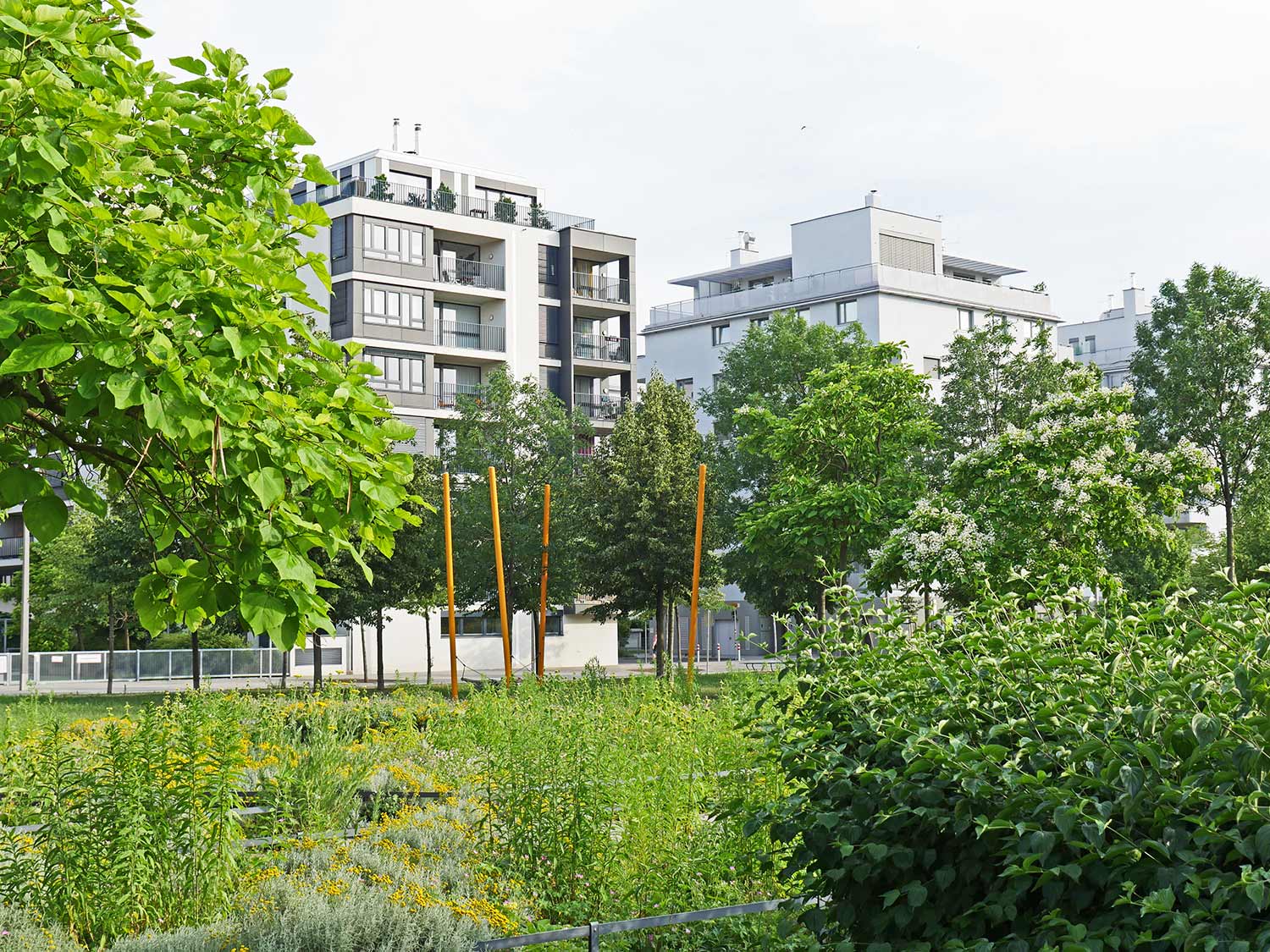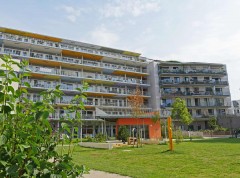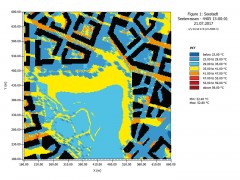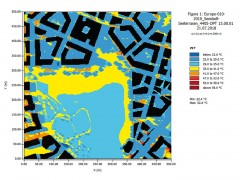Many studies have already shown that properly considered building structures, together with green and blue urban infrastructure, can make a significant contribution to reducing the urban heat island (UHI) effect. Which measures are necessary at which locations, and what specific climatic effects these have, can only be demonstrated with (micro-) climatic simulations. In the project “Green and resilient city”, led by the University of Natural Resources and Life Sciences, Vienna (BOKU)*, various climate simulation instruments are being combined and applied to landscape and urban planning. The goal of the project is to create a “proof of concept” for a control loop and toolset for regulating, optimising and evaluating green and climate-sensitive landscape and urban (district) planning. It comprises urban development and open-space planning tools as well as climate simulations on various
Reducing the urban heat island effect
Measures for reducing the urban heat island effect can be implemented on different levels – from greening individual buildings or roads to considering the climatic performance of various building typologies and housing structures in areas of urban expansion. A well-considered combination of measures can have an impact beyond the local area. For example, planting a tree has a positive microclimatic effect (shading, evapotranspiration) on its immediate surroundings. Greening several streets in a district has a more extensive effect.
Toolset for various levels
The first multi-scale toolset for green and climate-sensitive urban (district) planning will be created within the framework of the project. It comprises a green and open space factor (BOKU) as an urban measure as well as a control and planning tool at plot level, the GREENPASS® (green4cities GmbH) as a tool for optimising the microclimatic effects of green infrastructure at plot and district level, the urban climate model MUKLIMO_3 (ZAMG) as an evaluation tool for the mesoclimatic effect at city level, and Cosmo-CLM (AIT) as a regional climate simulation model.
Use in practice
The practicality and effectiveness of the toolset for developing green and climate-resilient city districts are being tested in two Viennese districts – the urban renewal area of Innerfavoriten/Kretaviertel in Vienna’s 10thdistrict and the urban extension area of aspern Seestadt. In Seestadt, the urban development competition “Quartier Seeterrassen” was supported by the research project and the joint use of the tools was successfully tested. A specified target value for the green and open space factor ensured an appropriate level of greening. The GREENPASS® allowed simulation, comparison and analysis of the effectiveness of green infrastructure and the effects of the built structures proposed in the various competition submissions. However, this scientific support did not end with the announcement of the winning project. Building on the results of the simulation, adaptations were formulated for the winning project and optimisations made by introducing various targeted measures. With the green and open space factor, the necessary extent of greening was embedded in the urban development mission statement for further planning and implementation processes. The planning area was additionally simulated with MUKLIMO_3 in order to demonstrate the climatic effects on the district as a whole.
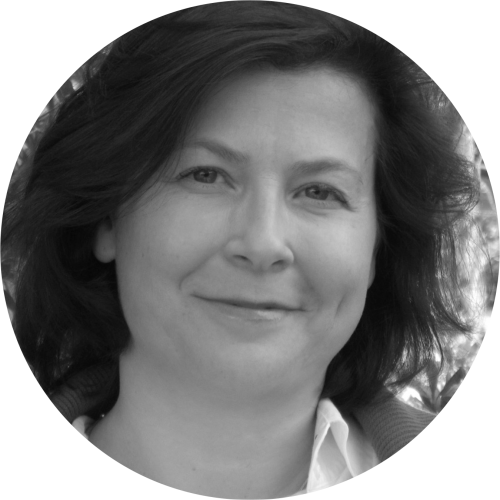
„The implementation of climate-resilient urban planning and development is being supported for the first time with the ‘Green and resilient city’ toolset. The research project will create fundamental principles to enable cities to implement sustainable urban planning in face of the challenges posed by climate change, from construction site level to the city as a whole. Comprehensive greening helps to overcome these challenges and creates value added for all residents.”
Assoc. Prof. Doris Damyanovic; Project Director “Green and resilient city” * Project partners
* Projektpartner
University of Natural Resources and Life Sciences/Institute for Landscape Planning (BOKU ILAP) and Institute for Landscape Development, Recreation and Nature Conservation Planning (BOKU ILEN), green4cities GmbH, ZAMG – Department of Model Applications, Vienna 3420 aspern Development AG – aspern Die Seestadt Wien, AIT – Austrian Institute of Technology GmbH, MA 22 – Environmental Protection
